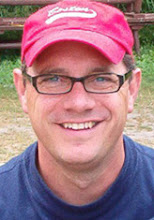 Trends in global climate change are painstakingly emerging from a complex puzzle being assembled by diligent scientists all over the world. There are literally countless pieces, and there's no picture on the cover of the box to help them along.
Trends in global climate change are painstakingly emerging from a complex puzzle being assembled by diligent scientists all over the world. There are literally countless pieces, and there's no picture on the cover of the box to help them along.One of the puzzle-makers is Nicholas School forest ecologist Jennifer Swenson who's looking very hard at several square pieces, each 250 meters on a side, that each amount to one pixel on a satellite image of North Carolina. Specifically, Swenson wants to know precisely when and how each pixel switches from brown to green as spring arrives in April or May.
To MODIS, the NASA satellite program that provides these awesome pictures of spring as seen from space, it's just a single point of light, but Swenson knows there's actually a ton of data in that one pixel. The exact arrival of spring, as measured by a full canopy of leaves, is an important variable in the global change equation.
 Swenson explained to the Visualization Friday Forum how she's taking ground-truth measurements of soil moisture, temperature, leaf development and other variables to calibrate what MODIS sees with what is really going on.
Swenson explained to the Visualization Friday Forum how she's taking ground-truth measurements of soil moisture, temperature, leaf development and other variables to calibrate what MODIS sees with what is really going on.Eventually, this will add to MODIS's ability to determine whether in fact spring is arriving earlier and earlier, as already evidenced by anecdotal records such as cherry blossom dates in Washington DC and the first arrival of migrating birds, as recorded by amateur record-keepers.
Together, this is known as Phenology, the study of the timing of natural events, and that's our new word for the day.


2 comments:
Nice story about a wonderful researcher. OK, OK, so I'm her dad; she's still wonderful, and now I finally know what she's been doing.
;) Awww bless, what a sweet dad she has!
Post a Comment